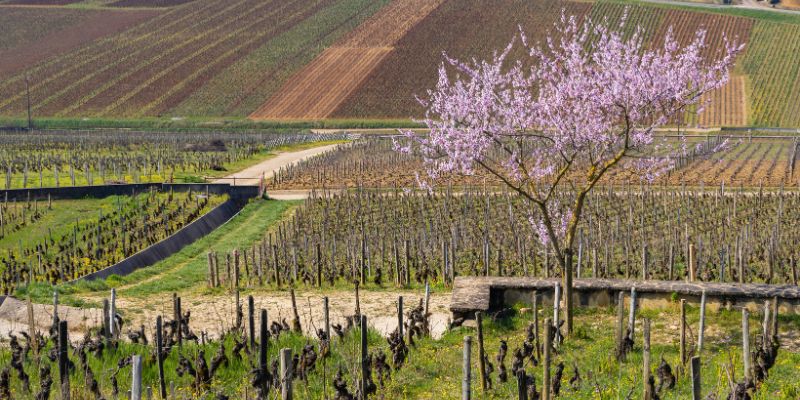Introductory Wine Course
Intro to White Wines
White wine offers newcomers an excellent starting point for understanding how grape variety, climate, and winemaking technique work together to create distinct flavors and styles. Made primarily from green or yellow grapes, white wines range from light and crisp to rich and full-bodied, with flavor profiles spanning citrus and stone fruits to tropical notes and floral aromatics. Learning about white wine means exploring how the same grape can produce vastly different results depending on where it grows and how the winemaker handles it, revealing the interplay between agricultural science and creative artistry that defines all great winemaking.
Chardonnay: The Winemaker's Canvas
Chardonnay exemplifies how winemaking decisions shape a wine's character. This neutral grape variety acts as a blank canvas, expressing terroir and technique with remarkable clarity. In cool climates like Chablis, Chardonnay produces lean, mineral-driven wines with green apple and citrus flavors, often showing a distinctive chalky or flinty quality. Warmer regions yield richer expressions with stone fruit, melon, and sometimes tropical notes. The winemaker's choices further transform the wine. Oak barrel fermentation and aging introduce vanilla, toast, and baking spice flavors while softening the texture. Malolactic fermentation converts sharp malic acid into softer lactic acid, creating the creamy, buttery character many associate with California Chardonnay. Some producers avoid these techniques entirely, crafting bright, unoaked versions that showcase pure fruit and acidity. This variability makes Chardonnay ideal for understanding how human intervention and natural factors combine to create a finished wine.
White wine that experiences contact with oak barrels often exhibits aromas and flavors of cinnamon, hazelnut and vanilla.
The Aromatic Varietals of Sauvignon Blanc and Riesling
Sauvignon Blanc brings immediate aromatics and zippy acidity to the table. Its flavor profile includes grapefruit, lime, green apple, and herbaceous notes ranging from grass to jalapeño, depending on ripeness and region. New Zealand's Marlborough region produces exuberant, tropical versions with passion fruit and gooseberry, while France's Loire Valley offers more restrained, mineral-focused styles. Riesling, meanwhile, deserves recognition for its range from bone-dry to sweetly luscious, all supported by brilliant acidity. The grape shows peach, apricot, lime, and green apple flavors alongside floral notes of honeysuckle and jasmine. German Rieslings often display a petrol or slate-like minerality that becomes more pronounced with age. Both varieties demonstrate high natural acidity, which preserves freshness, enhances food pairing potential, and allows the wines to age gracefully. These grapes show how aromatic compounds and acid structure define a wine's personality and longevity.

Expanding Your White Wine Vocabulary
Other white varieties offer additional perspectives on style and flavor. Pinot Grigio typically delivers light, refreshing wines with pear and lemon notes, though Alsatian Pinot Gris shows fuller body with stone fruit and honey characteristics. Viognier produces aromatic wines rich in apricot, peach, and floral notes, often with a viscous, almost oily texture despite being dry. Grüner Veltliner from Austria combines citrus and green apple with distinctive white pepper and herbal qualities, offering both refreshment and complexity. Each variety demonstrates different aromatic profiles, body weights, and acid levels. Some grapes naturally produce lighter wines suited to warm weather drinking, while others create substantial wines that pair with richer foods. Understanding these differences helps you identify patterns in what you enjoy and builds a framework for exploring unfamiliar bottles confidently.
White wine styles range from delicate and crisp to opulent and complex, offering something for every preference and occasion. Through Chardonnay you learn about winemaking technique, through Sauvignon Blanc and Riesling you discover aromatic intensity and acid structure, and through other varieties you expand your understanding of texture and flavor diversity. Each glass represents decisions made in vineyard and cellar, inviting you to appreciate white wine as both scientific process and creative expression.